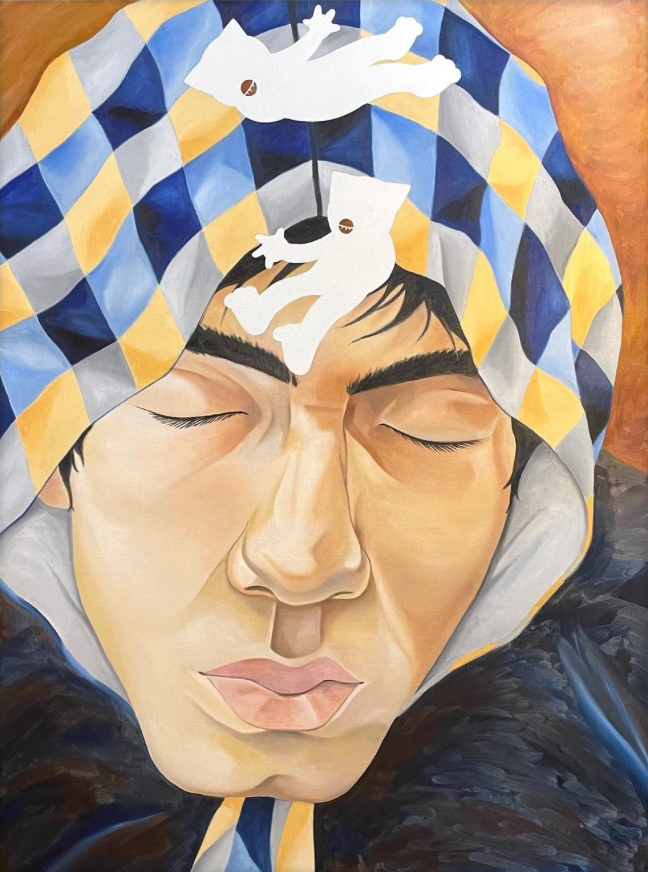VICTOR TAKERU THE QUIET WITHIN
At just 27, Franco-Japanese artist Victor Takeru is emerging as a quiet force in contemporary painting. Trained in graphic design, self-taught in fine art, he’s developed a delicate, introspective visual language he calls “ambient music painting.” A conversation with a soft-spoken painter whose work explores calm, disappearance, and the art of observation.
What was your artistic path like?
I’ve been drawing ever since I could hold a pencil. As a kid, I was really into comics, mainly French ones. I had this habit of always starting new stories without finishing them… My parents saw that drawing was the one thing I really stuck with, so they encouraged me. After middle school, I went to an applied arts high school, then studied graphic design at Gobelins.
I’ve been drawing ever since I could hold a pencil. As a kid, I was really into comics, mainly French ones. I had this habit of always starting new stories without finishing them… My parents saw that drawing was the one thing I really stuck with, so they encouraged me. After middle school, I went to an applied arts high school, then studied graphic design at Gobelins.
Why did you leave design behind?
Graphic design taught me the tools: Photoshop, Illustrator, and so on. But it didn’t fulfill me. I struggled with working on commissions or answering to clients. So, I left that behind and started focusing entirely on painting, on my own terms.
Graphic design taught me the tools: Photoshop, Illustrator, and so on. But it didn’t fulfill me. I struggled with working on commissions or answering to clients. So, I left that behind and started focusing entirely on painting, on my own terms.
And then you went to Japan?
Yes. I needed a breath of fresh air. I went alone, with the intention of doing an exhibition in Tokyo and to figure out whether I really wanted to continue in this field. Covid kept me there longer than expected, but that turned out to be a gift: I had time to paint, to explore, to develop a style. What you might learn at an art school, I had to figure out on my own. Building a coherent universe takes time.
Yes. I needed a breath of fresh air. I went alone, with the intention of doing an exhibition in Tokyo and to figure out whether I really wanted to continue in this field. Covid kept me there longer than expected, but that turned out to be a gift: I had time to paint, to explore, to develop a style. What you might learn at an art school, I had to figure out on my own. Building a coherent universe takes time.
How would you describe that universe?
I call it Ambient Music Painting. It’s a term I invented to describe the mood of my work: quiet, full, like ambient music by Brian Eno. You can walk past it and feel nothing, or suddenly be hit by something unexpected. I’m totally okay with my paintings hanging in a space where no one really looks at them. It’s like music for airports: barely noticeable, but it fills the room.
I call it Ambient Music Painting. It’s a term I invented to describe the mood of my work: quiet, full, like ambient music by Brian Eno. You can walk past it and feel nothing, or suddenly be hit by something unexpected. I’m totally okay with my paintings hanging in a space where no one really looks at them. It’s like music for airports: barely noticeable, but it fills the room.
Is your work mostly introspective?
Yes. Most of my paintings are self-portraits, but without eyes. I never paint the gaze. I want viewers to take in the whole painting without being pulled straight into eye contact. There’s something about hiding, about withdrawal, in my work. That says a lot about who I am. I’ve never been super comfortable in front of a camera. The self-portrait is a step toward self-acceptance, but I’m not interested in overexposure.
Yes. Most of my paintings are self-portraits, but without eyes. I never paint the gaze. I want viewers to take in the whole painting without being pulled straight into eye contact. There’s something about hiding, about withdrawal, in my work. That says a lot about who I am. I’ve never been super comfortable in front of a camera. The self-portrait is a step toward self-acceptance, but I’m not interested in overexposure.
Do you work exclusively with oil?
Mostly, yes. I started with acrylic, but it dries too fast. Oil lets me breathe. It opens more possibilities, especially in terms of texture and depth. That said, I still use acrylic for certain flat areas.
Mostly, yes. I started with acrylic, but it dries too fast. Oil lets me breathe. It opens more possibilities, especially in terms of texture and depth. That said, I still use acrylic for certain flat areas.
Who are your influences?
They change over time. I admire Claire Tabouret, Sterling Ruby, Brian Calvin, Léon Spilliaert… Right now, I’m really into Florian Krewer. There’s something childlike in his work: naïve on the surface, but also dark underneath. It resonates with me. As for Japanese art, I wasn’t really influenced by manga or traditional styles. But I do think the way I structure my images comes from somewhere, maybe my mother’s Japanese sense of order, of balance.
They change over time. I admire Claire Tabouret, Sterling Ruby, Brian Calvin, Léon Spilliaert… Right now, I’m really into Florian Krewer. There’s something childlike in his work: naïve on the surface, but also dark underneath. It resonates with me. As for Japanese art, I wasn’t really influenced by manga or traditional styles. But I do think the way I structure my images comes from somewhere, maybe my mother’s Japanese sense of order, of balance.
What’s your studio routine like?
Coffee. Ambient music. Lots of breaks. I probably have some attention issues. I find it hard to focus for long stretches. But even during breaks, I’m still feeding my brain, reading, flipping through books. My mind stays creative.
Coffee. Ambient music. Lots of breaks. I probably have some attention issues. I find it hard to focus for long stretches. But even during breaks, I’m still feeding my brain, reading, flipping through books. My mind stays creative.
What are you working on now?
I’m preparing a show in Shanghai for September. I’m working on a series of self-portraits combined with doorways: thresholds, transitions, moments of intimacy. And there’s this recurring “camouflage cap” that I often paint: a kind of symbol for staying under the radar.
I’m preparing a show in Shanghai for September. I’m working on a series of self-portraits combined with doorways: thresholds, transitions, moments of intimacy. And there’s this recurring “camouflage cap” that I often paint: a kind of symbol for staying under the radar.
And Tokyo: how has it influenced your work?
Tokyo gives me peace. People think of it as hectic, but it’s actually very calm. Even Shibuya: if you walk just one block over, suddenly it’s quiet. That contrast is unique. Paris feels much more cramped and noisier to me. Here, I can breathe. And I think that shows in my painting.
Tokyo gives me peace. People think of it as hectic, but it’s actually very calm. Even Shibuya: if you walk just one block over, suddenly it’s quiet. That contrast is unique. Paris feels much more cramped and noisier to me. Here, I can breathe. And I think that shows in my painting.
GALLERY



The airThe air outside is crazy right now, 2025 Oil and acrylic on canvas 162x130cm outside is crazy right now, 2025 Oil and acrylic on canvas 162x130cm
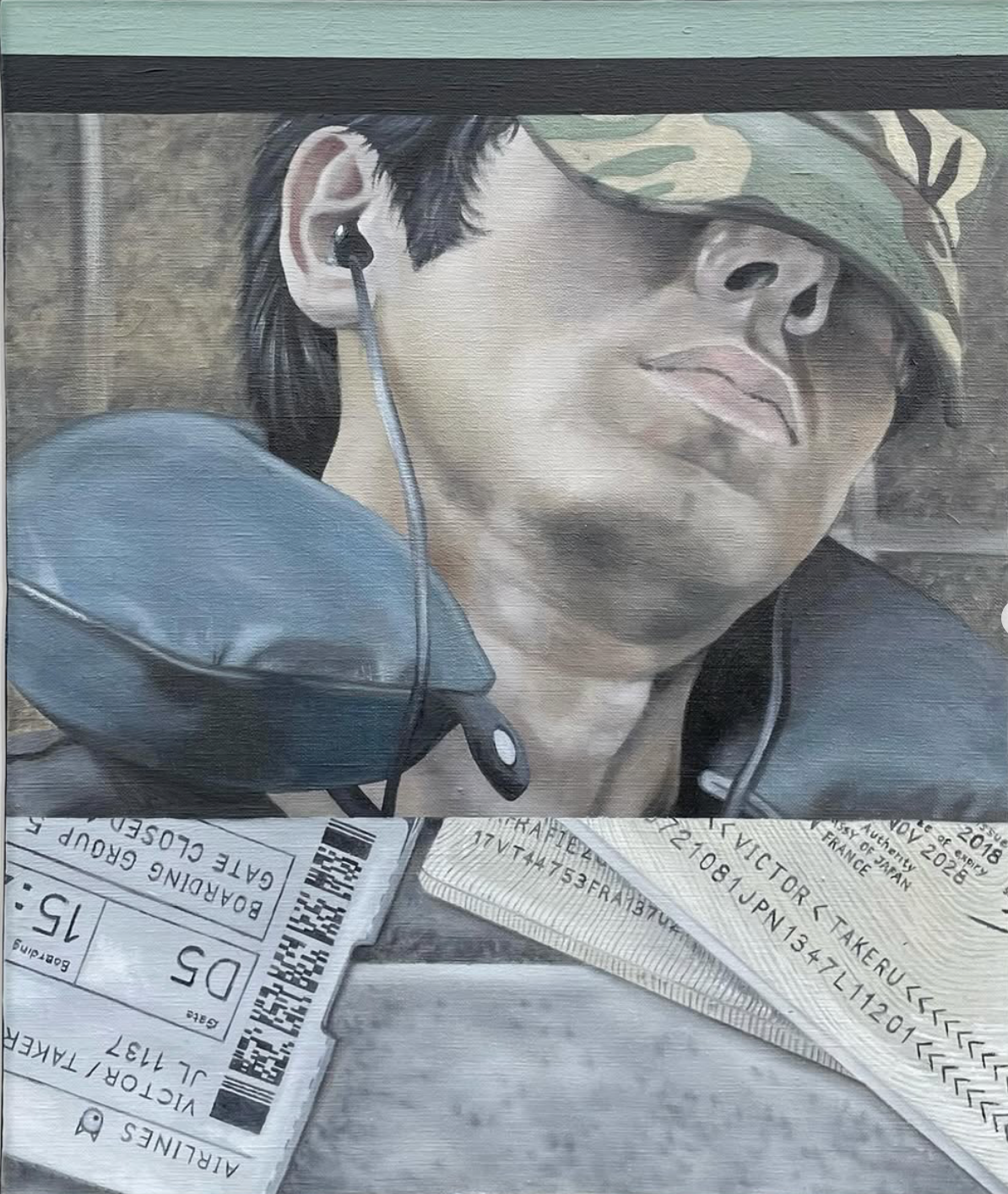
Inna daze, 2024 Oil and acrylic on canvas
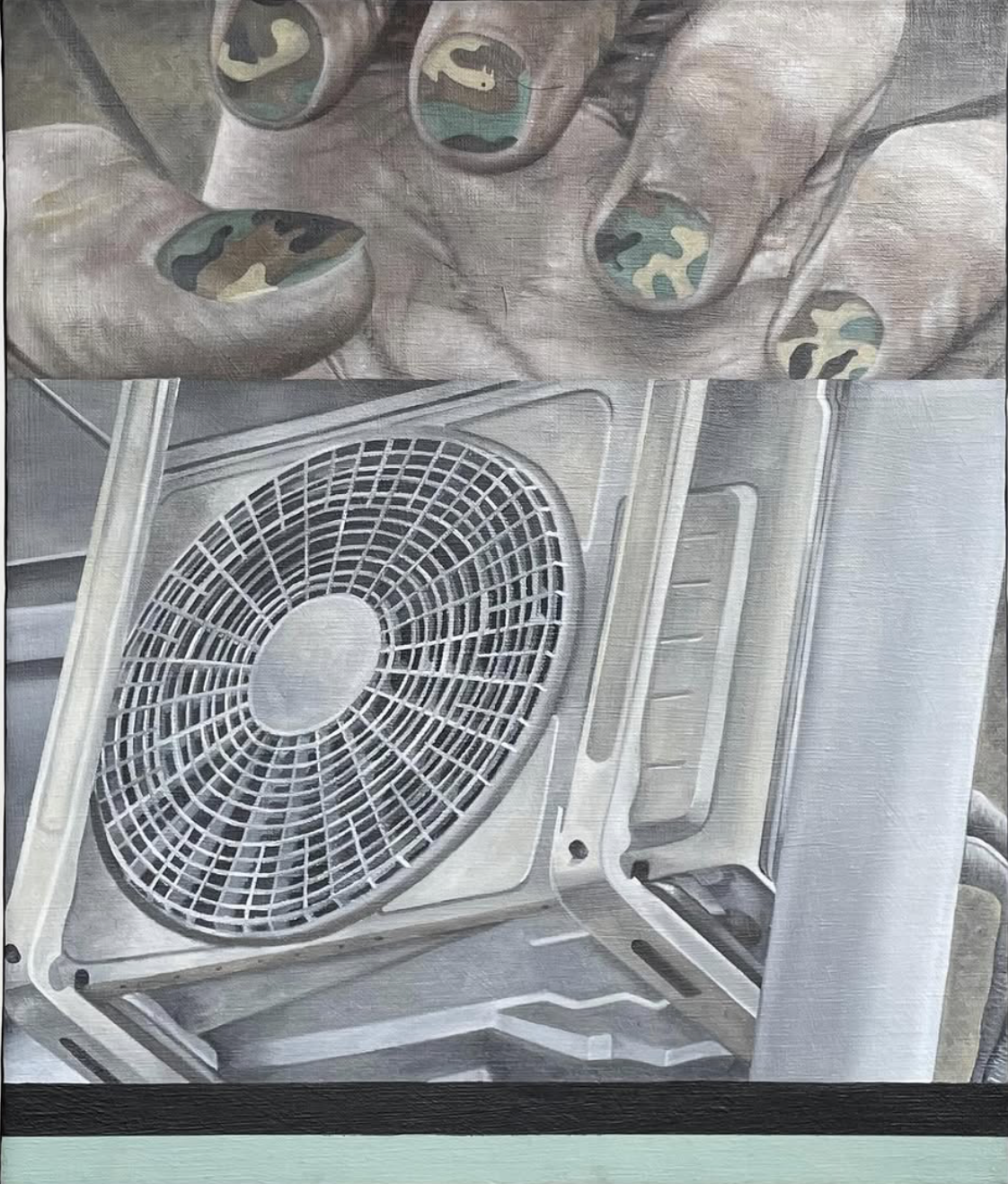
Lonely Thugg, 2024 Oil and acrylic on canvas

Exit Melodie, 2024 Oil and acrylic on canvas
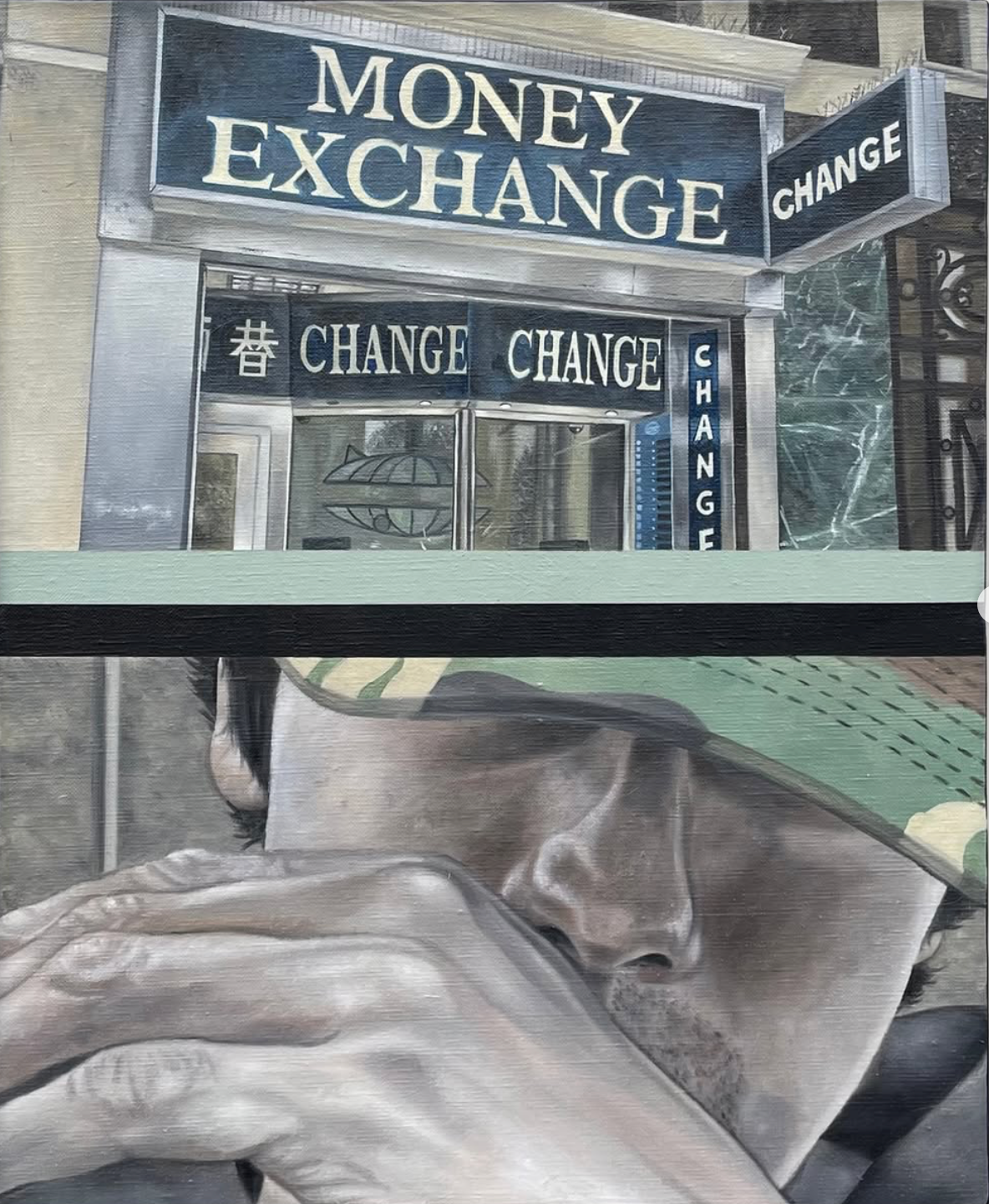
Miserere, 2024 Oil and acrylic on canvas
